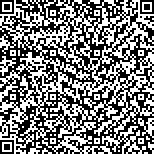| 摘要: |
| 在零换水卤虫养殖系统中, 研究葡萄糖和盐度对卤虫Artemia franciscana 生长、卤水中生物絮团形成、水质及其微生物多样性的影响。实验设四组, 每组三个平行, 分别在盐度为50、100和150 的养殖水体中添加葡萄糖(添加量随着卤虫的生长逐渐增加从每天12mg/L 到37mg/L), 对照组盐度为50 且不添加葡萄糖。单位养殖水体为1L, 卤虫起始密度约为1200ind/L, 投喂浓缩杜氏藻Dunaliella viridis, 养殖周期为20 天。结果显示, 添加葡萄糖可以显著提高生物絮团体积, 降低水中的铵盐、亚硝酸盐、硝酸盐和总氮水平, 提高卤虫总生物量(P<0.05)。但随着盐度升高, 卤虫生物量显著降低(P<0.05), 亚硝酸盐和总氮水平显著升高(P<0.05), 絮团体积有所升高。另外, 葡萄糖添加和盐度对卤虫粗蛋白和脂肪酸含量无显著影响(P>0.05) 。PCR-DGGE 分析表明, γ-变形菌纲(γ-proteobacterium)为生物絮团中优势菌群且以海洋细菌为主。与对照组相比, 添加葡萄糖和升高盐度显著降低菌群丰富度指数(P<0.05), 环境承载力下降。本研究结果为高盐环境条件下生物絮团的形成机理及其在卤虫人工养殖中的应用提供了参考。 |
| 关键词: 卤虫养殖 碳源 盐度 生物絮团 细菌多样性 |
| DOI:10.11693/hyhz20140500147 |
| 分类号: |
| 基金项目:科技部国际科技合作计划项目,2010DFA32300号;天津市自然科学基金重点项目,13JCZDJC28700号。 |
附件 |
|
| EFFECTS OF GLUCOSE AND SALINITY ON ARTEMIA GROWTH, BIOFLOC FORMATION, AND MICROBIAL DIVERSITY IN CULTURE |
|
WANG Jiao, MA Guan-Nan, DENG Yuan-Gao, SUI Li-Ying
|
|
Tianjin University of Science & Technology, Tianjin Key Laboratory of Marine Resources & Chemistry, Tianjin 300457, China
|
| Abstract: |
| We studied the effects of glucose addition at different salinities on Artemia growth, water quality, biofloc formation, and the microbial biodiversity in the culture without water exchange. Four treatments were set in triplicates. The amount of glucose addition was gradually increased in 20-day culture from 12mg/L to 37mg/L daily in salinities 50, 100 and 150. The control was in salinity 50 without glucose enrichment. Artemia were cultured in 1L-plastic cone at initial density of approximately 1200ind/L and fed the concentrated Dunaliella viridis at C/N ratio of 20. The results show that glucose enrichment promoted significantly the total Artemia biomass, increased the biofloc volume, and reduced the concentration of ammonium, nitrite, nitrate and total nitrogen in the culture medium (P<0.05). On the other hand, increasing salinity decreased significantly the total Artemia biomass and increased the levels of nitrite and total nitrogen (P<0.05), and biofloc volume. However, glucose addition and salinity showed no significant effect on crude protein content and fatty acid profile of Artemia (P>0.05). 16S rDNA PCR-DGGE analysis showed that γ-proteobacterium was the predominant bacterial population in the bioflocs, and most of them were marine bacteria. Against the control, glucose addition and salinity reduced significantly the range-weighted richness (P<0.05), thus negatively affected the carrying capacity of ecosystem. Therefore, results of this study may guide the utilization of biofloc in hypersaline condition, particularly in Artemia culture system. |
| Key words: carbon source salinity bioflocs Artemia culture microbial diversity |
